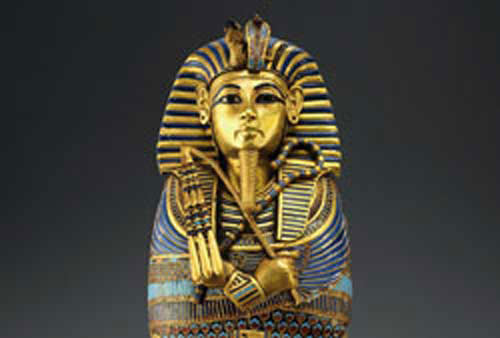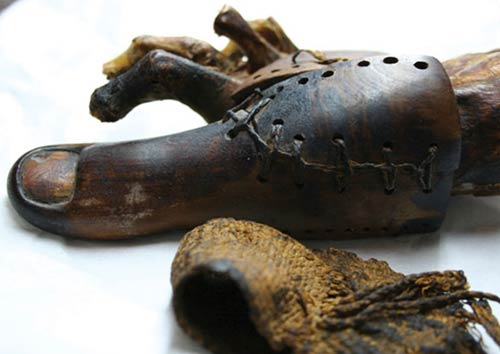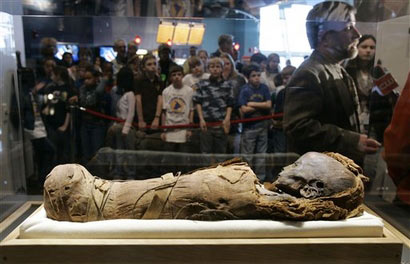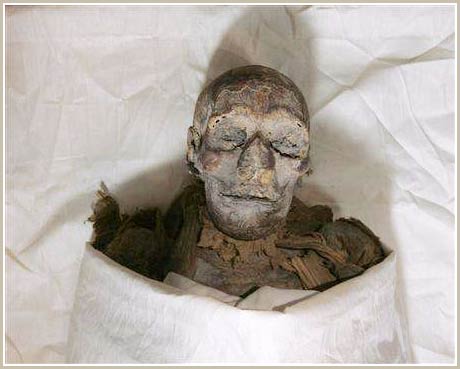Important findings about ancient Egypt
The mummy of a child, the dwarf statue, or the trail of a missing ancient city are some of what has been found about the mysterious ancient Egyptian world.
Wine of King Tut
The discovery of jars of wine in King Tut's grave caused a group of Spanish scientists to try to find out if the young king liked red or white wine. The analysis of residues left in 2005 showed that the bottles contained syringic acid, indicating that the wine was made from red grapes.

(Photo: LiveScience)
Great big toe
Archaeologists discovered a grave near Thebes in 2005 and found a fake big toe attached to a mummy's foot. This is considered to be the first assembly of human body parts.

(Photo LiveScience)
Mummy children
The mummy of a 6-year-old Egyptian child has long been a concern of a group of international investigators to find the whereabouts and mysteries of the boy's death.

(Photo: Yimg.com)
Queen mummy
Officials in Cairo announced in July 2007 that the mummy was discovered in the Royal Valley of Queen Hatshpsut, a reigning pharaoh in the 15th century.

A mummy identified as Queen Hatshepsut is on display
Egyptian museum in Cairo on June 27, 2007 (Photo: Reuters)
Dwarf statue
The statue was erected to honor Seneb, an Egyptian dwarf who served King Pepi II in the sixth dynasty. Research shows that dwarfs like Seneb are respected and even hold high positions in society. .

(Photo: Richard-seaman.com)
First seagoing ship
Archaeologists in March 2006 claimed to have excavated near the Red Sea a shipyard containing the world's oldest seagoing ships. Artifacts such as wooden planks, cargo punctures show that the Egyptians went to sea from 4,000 years ago.

City missing
The satellites identified the location of a 1,600-year-old Egyptian city. Photos of this ancient ruins were released in July 2007.

Sand sea
The Big Sand Sea in Eastern Sahara is now nothing but 116 km 2 desert. But the climate study published in July 2006 showed tropical rains about 10 millennia ago that made it a hospitable place for people and wildlife.

Ancient fun
Ancient paintings depicting swimming activities discovered in a cave are proof that people in southwestern Egypt used to play in large puddles 8,000 years ago.

The most durable mummy
Archaeologists discovered a 2,500-year-old Egyptian tomb in 2005 and found three mysterious coffins, in which a casket contained an amazingly intact mummy. An archaeologist said it could be the best mummy ever.

Queen Nefertiti
Given that many of their archaeologists have been illegally taken from Egypt, in April 2007, officials in the country announced that they would ask foreign museums to return the most precious items such as Platforms. Rosetta stones and half-human statues of Queen Nefertiti.

(Photo: msn)
Secret pyramid
Evidence shows that some of the stones used to build the great pyramids in Giza are not chiseled and exploited like some people think. The test showed that the internal and external rocks were not chiseled from natural limestone.

King Tut
Scientists and artists completed the first reconstruction of King Tut's face thanks to CT mummy technology. The re-enactment produced an unexpected image of the ancient pharaoh's drawings.

MT
- The DNA of ancient mummies is not the same as the Egyptians today
- What animals did the ancient Egyptians worship?
- Homosexuality in ancient Egypt
- Learn the disasters that destroyed ancient Egypt
- 6 things we do not know about the people of ancient Egypt
- 3 everyday items you won't believe are from ancient Egypt
- Mysterious mysteries of ancient Egypt
- Dead Sea scrolls and important archaeological findings in 2017
- Add new findings from ancient Egyptian mummies
- Discovered an ancient tomb over 3,500 years old in Egypt
- New timeline for the beginning of ancient Egypt
- Discover hundreds of ancient Egyptian pyramids, hidden deep beneath the ground
 Discovered an ancient centipede fossil 99 million years old
Discovered an ancient centipede fossil 99 million years old Discovered bat-like dinosaurs in China
Discovered bat-like dinosaurs in China Discovered a 200-year-old bronze cannon of the coast
Discovered a 200-year-old bronze cannon of the coast Discover 305 million-year-old spider fossils
Discover 305 million-year-old spider fossils